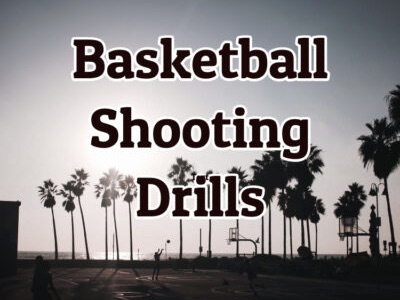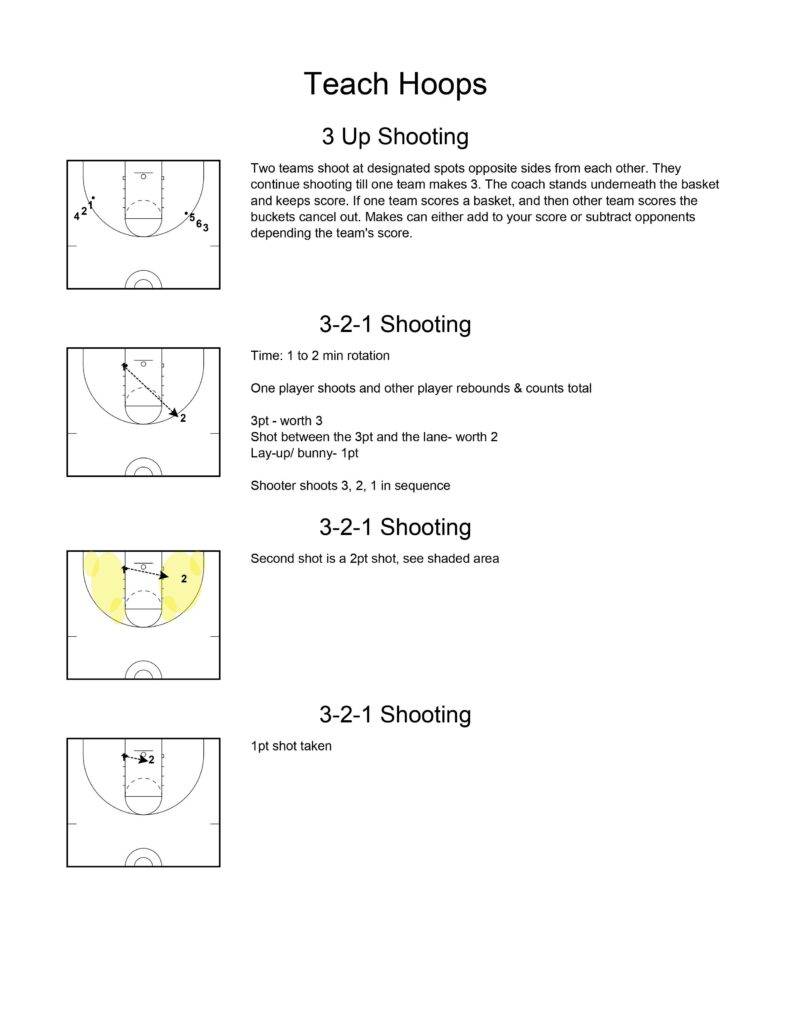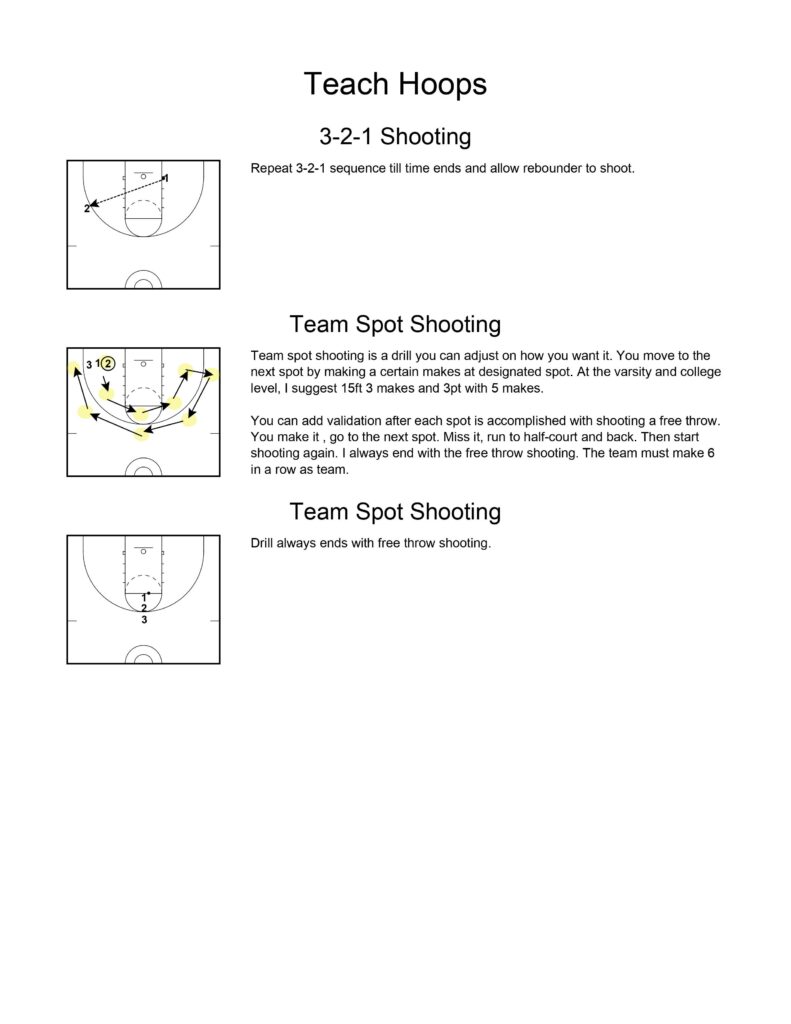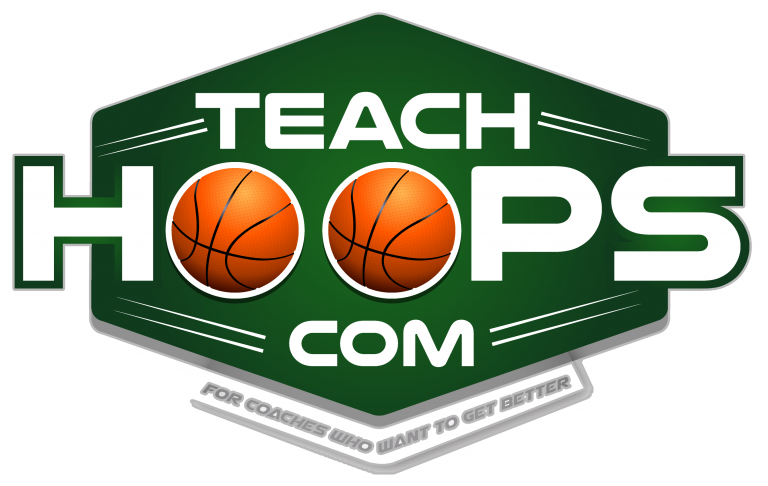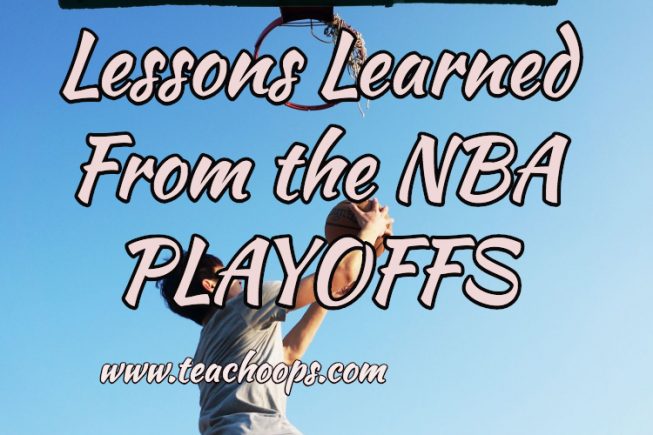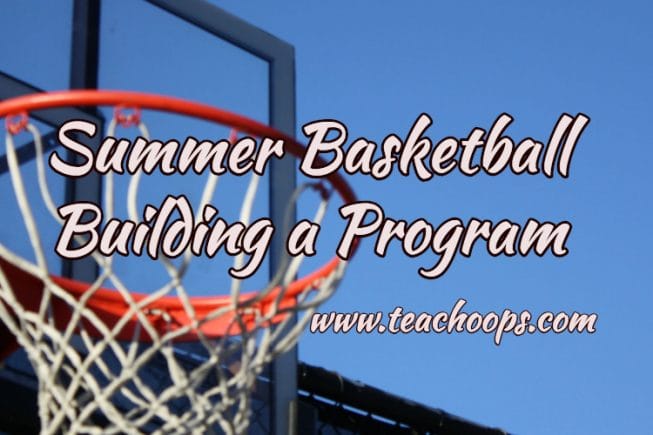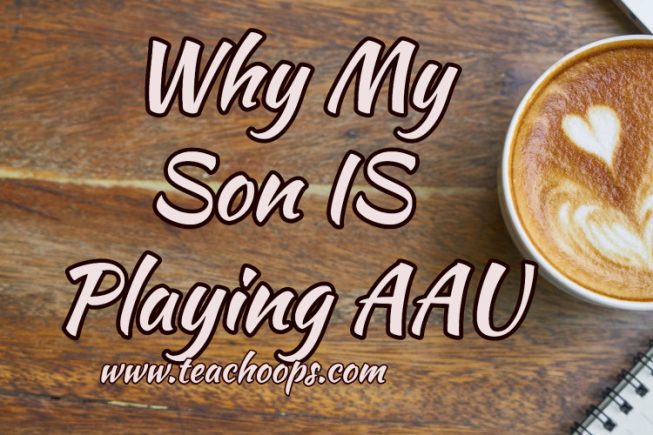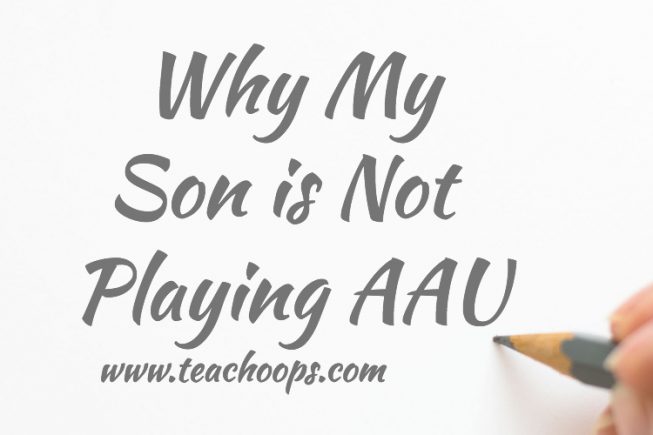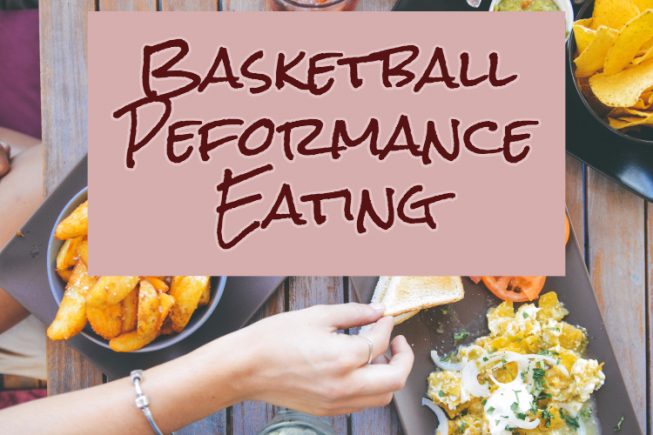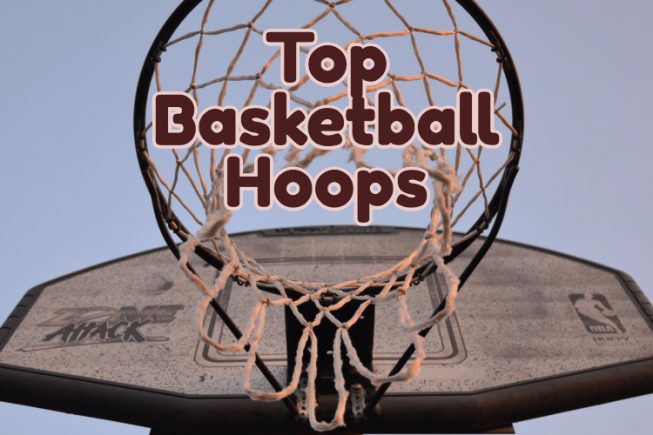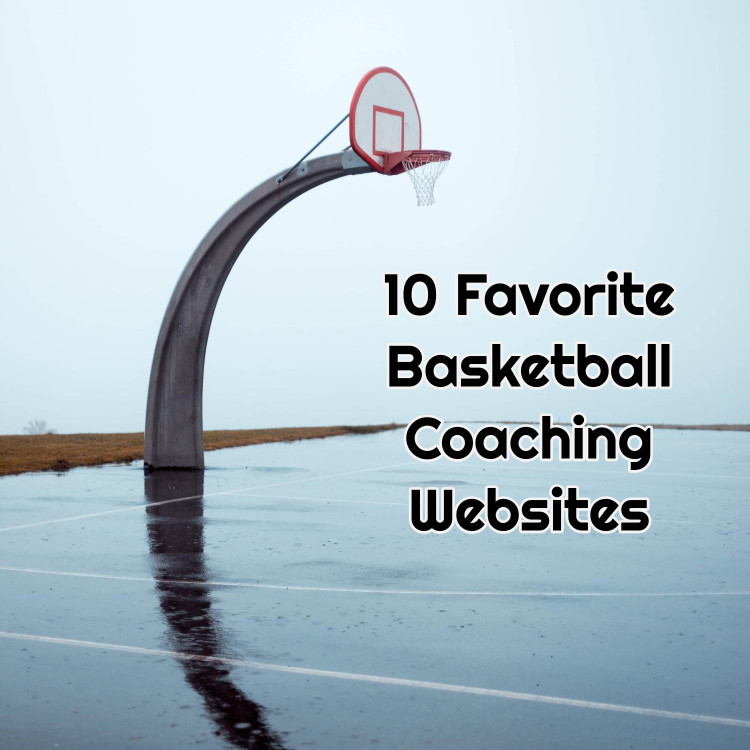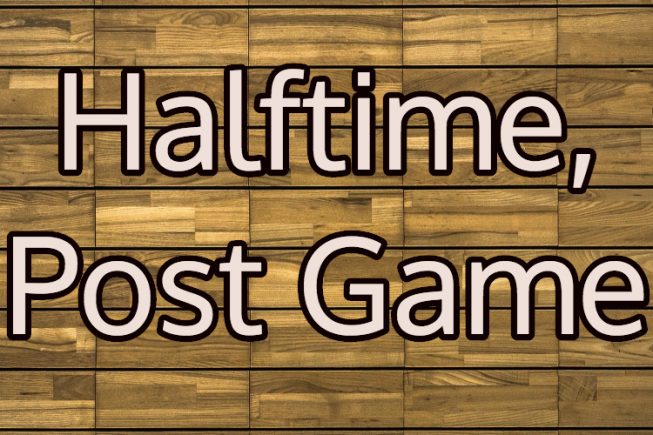
by 4159987 | Feb 12, 2018 | Uncategorized
This Podcast is a sneak look at teachhoops.com . How do you handle halftime? The post game speech? What is your off season practice look like? What type of shooting machine do you use?
From the fifth quarter studios in Madison, Wisconsin, you’re listening to coach unplugged. Here is your host, Steve Collins. Everybody welcome to. This episode is brought to you by the people over at HealthIQ/bcu, an insurance company that helps health conscious people like you, runners, basketball coaches, weightlifters, vegetarians, people that eat well, get lower rates on their life insurance over to healthiq/bcu. See if you qualify and help us support the show. And it’s a good, it’s a good thing for you. It’s a good thing for your family. And it’s a good thing for coach plug. So government check Mount Health Iq.com/. All right, so we’re gonna get started here a couple minutes early, but that’s OK. Um, so a couple questions and then if you’ve got questions, put them over in the chat over on the side and I will, uh, definitely get to them as fast as I can.
First question is from from Janice. She had put it in a little bit earlier, but her question was, and, and when I’m looking to the side over here, it’s because I’m, you know, I don’t have quite the right move it over a little bit. Um, I don’t have quite my, uh, set up the way it normally is. My daughter was in doing work in my office today, so I’ll never been quite set up the way I normally do. But anyway, so the first question was, what do you talk about at half-time and how do you break it? How do you break your halftime up? Um, so how do you, how do you tackle a specific halftime and um, you know, we have in where I coach, um, we have 10 minutes at half time, so, uh, the way it works is usually, you know, obviously the buzzer goes,I have an assistant coach who goes and checks the book to make sure that we’re, we’ve got files and everything situated correctly at that point.
And then I put the, I put the team into the locker room and let them have several minutes by themselves, um, before, before we come in and uh, um, have our discussions. What I do is I get the coaches together and we, um, we basically talk at that point, um, and kind of come up with some solutions or the first half. What are we doing well, what are we not doing well, what can our adjustments beef the second half. Um, so then, uh, yeah, so adjustments. What can we do? We talk about offensive adjustments, we talked about defensive adjustments. I apologize for talking in the background there. Um, and then, uh, so then I go in and we tend to do are we tend to do are a sets, we tend to talk about our offensive or defensive assets and I think it’s really important at halftime specifically that you need to, um, talk about probably those key two or three adjustments just before you leave the locker room.
Speaker 1: 03:15 Um, those are really important as far as heading out to the second half. And I usually try to leave two or three minutes to get them loose, get them moving again after half time. Um, I think teams come out of halftime a little flat sometimes, especially depending on the first half went. Um, so I like to leave a couple minutes. I like to, um, to do those specific things. Um, hi todd. How are you? Um, so you can, I guess I didn’t know him, facebook live, you could also leave comments, but anyway, so we were just talking about halftime, what we do kind of do with halftime. Um, you know, it’s not nuclear physics as far as how we handle half time. But again, we check files, we check any, anybody that’s going off, anybody that’s doing really well the first half we meet as a staff so we can talk about offense on events and stuff.
We we basically come up with a plan as a coaching staff before I go in and talk to them and a half time. I think that that’s really important either that I have less time in the, in the locker room at half time and be able to converse about things that we need. Then me just kind of going right in. Um, and then, uh, I usually start with a defensive parts to be honest with you. And then I talk about the offensive parts and then any motivational, anything we’re not doing, we’re not getting the floor, we’re not taking charges. And then just before we leave the lock room, you know, I hit him with a couple of things. Hey, remember we get back on defense, we got to know where [inaudible] is at all times.
I’m whatever. And then we after that, after that spurred me talking for four or five minutes because most of it they’re going to forget. Then I go into um, like make sure they get out so they have enough time to warm up. So it’s that too much after the game. So Janice also asked about what we do after the game, after the game. It really depends. Um, they don’t hear you as well. Do they hear you? It halftime? Um, but they definitely don’t hear you, first of all, after a tough loss, they don’t hear you after a big when they tend to hear you if it’s a game. Um, so if there’s something really important for me to say, I don’t tend to say it after the game, I will keep it short and there are exceptions to this and I’ve actually broken this exception this year.
Speaker 1: 05:44 Um, after some wins that I didn’t think we played well and I thought, hey, we got to adjust. And that was right and stumbled a couple times because of some of the things I said in those, but they don’t tend to hear it. You need to, if you need to get on kids, if you need to talk about what they did well or what they didn’t do well after the game doesn’t tend to be the time to talk to a group. I will grab a specific kid or a specific group of, hey, you did this. You were really rebounding well and you were doing this exceptionally well. I was so good. I was so proud of you. Um, but as it is an entire group, hey, nice when blah blah, blah blah, two or three minutes and then I try to get out of there and they will hear the words that you have to say better the next day at practice or in your film session or something like that than they will after a big win after a big loss there thinking 20 different things.
Who, how am I getting home, you know, it was my girlfriend man at me, Blah Blah Blah. I’m not kidding. It is. Um, it’s that kind of stuff that goes through their mind. So, um, if again, if you have any, any other questions, you know, put them in the comments down below or over on the side. Um, and I will definitely get to him. I’m just going through ones that I got people sent me before. Um, this [inaudible]. So we talked about half time. We talked about after the game, I’m a, someone sent me, how do you deal with a player who has a bad attitude but as, but as one of my better players. Um, that’s a tough one. I’m going to tell you, that’s it. That’s a difficult one. Um, you can’t teach without discipline. Kids want discipline is my, is my theory with that. Um, you know, if they’re not doing what you expect them to do, then there has to be a consequence.
so it doesn’t matter if it’s your best player, doesn’t matter if it’s number 15 on your bench, everything’s gotta be kind of consistent throughout. And if it’s not, you’re going to lose the control of the ship and bad things are gonna happen. So, um, it doesn’t matter. That doesn’t matter. They have a bad attitude because, you know, one bad apple can spoil a whole bunch, so you got to get that one on or you got to get rid of that one. Um, and then, uh, you can move forward, to be honest with you. I think that’s really a sport. Um, do you, here’s another question. Do you do film review, um, with the team after every game to watch it from start to finish? That’s a great question. So we use crossover. We don’t, we do, we use a lot of film. Um, we have a big game tomorrow, really big game tomorrow, one of the top teams in our state we play tomorrow, um, and I think we have nine or 10 names on them.
, uh, we do, we do different types of film sessions. So that’s a great question for all of the pro, the coaches out there. So the way film sessions worked for us is I’m normally the day after a game, especially if we didn’t play well, we will look at our film and it depends it, there’ll be times where we sit down and watch the entire film, um, and we’ll break it down and we’ll stop it, rewind it, you know, that takes good 45 minutes to an hour at least to do that. Uh, so do that after game. Sometimes we’ll just do clips after game, um, you know, will show us, we’ll show like the three minute mark to the seven minute mark or will show or we’re where our price was really good. So that’s the first thing with film. Um, it really depends on the opponent and really depends on what we’re doing and where we are in the season.
So I hope that helps. That. And then that’s the first thing. So, so the second thing is, um, we spent a lot of time looking at opponents because I think, I think coaching is a lot as much of how am I going to judge, how, how it’s player x going to adjust the player, why, um, how are we going to adjust to, to what they’re doing. I think, you know, especially with junior high, middle school, youth, high school, even the in the collegiate level, um, it’s really important, um, to be able to adjust. OK, so it is really about match ups and it’s really about how are we going to stop player 20 [inaudible], how are we going to stop him or her? Um, what are we gonna do to do that? Um, what adjustments can happen there. So I think those are really important.
Again guys, if you have you have comments over on the side, um, anything else you, uh, you want, um, please leave it over there. You know, we’ll, we’ll, uh, we can, uh, we can definitely ask questions, um, over the chats if you’re watching facebook live, if you’re listening to the podcast because it’s probably become one of my podcasts at some point because I think this is really good stuff. Um, or if you’re, you’re on our, you know, our, our live q and a right now, either any of the places, um, make sure that you go and leave a, leave a comment if you’ve got a question. I’m just going through questions that people have already sent me. Um, so if I go over here on the side, I can, uh, that’s why I’m looking at. I’m looking at the questions that people had free since me.
Speaker 1: 10:56 I’m finishing up with your question todd. Um, I think, uh, I think film is. Film doesn’t lie. I think I said that like four times today in practice. I’m somebody who wasn’t boxing out. Somebody wasn’t, I’m rotating correctly and uh, what did I do? You know, we showed him some film and uh, it doesn’t, you know, you, you weren’t getting there, you weren’t rotating the way you needed to rotate. Um, that’s a problem in the film, doesn’t the, you know, look at it, the film doesn’t lie, we talked about it, we talked about our practice, he didn’t the game we need to fix this problem. So, um, and then we, we, like I’ve told you, I don’t know if I told you todd, but we use crossover. So crossover. I’m a stat. Crossover is great for analytics, is great for breakdowns, you know, we can, we can show John’s everyone at John’s three pointers that we’re playing and then how does he deal with those?
Speaker 1: 11:50 And then here’s, um, here’s a specific thing. Um, do you film practice? I used to film practice. Um, there’s a reason I, you know, the problem is there’s only 168 hours in a week and I don’t have time. So a lot of that film initially when I, when I did it sat unwatched, um, and got washed in like June, which is not of any use to anybody. Um, so there will be times for members of the tubes. I have actually pro. I have actually taped my practice, isn’t shared it with them. Um, that’s something that I actually want to do. And for those of you up above, at or, or, or they’re listening to teachings that calm, um, is my membership site is great as a great todd can vouch. It’s a great community, a lot of resources, blah, blah blah. But anyway, so what I’ve thought about doing, and I talked to the dean about this to have the community that maybe we should get together and have each other’s practices and then that would be great if nothing else for the off season.
It’s like, Ooh, look with Dean doesn’t practice or liquid harmony does in her practice in California, or look what todd does, you know, so it would be. Yeah. Um, it is an awesome community. I agree todd. But um, no, I, that’s something that I’ve thought about. The problem is it’s like, OK, so here’s the issue with, with taping practice, college coaches do it. They also have for assistance. They also have a video coordinator breaking it all down. They also have time to watch it. They don’t have other kids like you and I do side gigs or side hustles. I’m teaching math all day, I don’t have time to sit down and watch my practice. Um, so that’s the issue with taping practice I think. I think it’s a good thing to do. Um, but I think it’s easier said than done to be able to find time to be able to watch it.
Speaker 1: 13:41 So I’m todd, did you get that package I sent? I sent it it school mail, so I may want to make sure he gets it. I’m todd Scott has a special needs kid on his. Uh, yeah, he’s got down syndrome, I believe. Anyway. Um, I sent him a package and I want to make sure he gets it. So if he doesn’t get it, you let me know. It is. School mail went out through the school meal so it could be three weeks from now. Who knows? Um, do I have a shooting machine? Yes, I have a shooting machine. Um, we’re in the process of buying another shooting machine. I use Dr. Dish. Um, I liked Dr. dish better. I’m going, AH, they’re going to give it tomorrow and cnet. All right, so, so Brad, I’m going to get back to your question. Hold on one second.
Speaker 1: 14:31 So like I said, I sent this package, um, I found some stuff for um, you know, some tee shirt. Well, anyway, I’m so happy time that, I mean that’s what I love about the community. I love that. I love the coaches are talking anyway. So soup I want a picture of, of, I want a picture of him giving that um, so I can share it with the boys. I told team my team signed our poster and stuff. We’ll do a poster and stuff and they all signed it, wanted to make sure that he got it and stuff. So I definitely want a picture so I can share it with my guys. And let’s hope we play well tomorrow. I’m going back to you brad. Um, so, uh, we, I believe in the shooting, so I, first of all, there’s a, there’s a 15, almost 16 year old living in my house who has spent a lot of time.
Speaker 1: 15:17 I’m on the shooting machine. He has spent a lot of time. I’ve told them he’s a great shooter. He’s not a score yet. Shooting machine is great for repetition. There’s a couple guys in my team that just need more reps right now. So the shooting machine is good. Every second I can get them another shot. Um, so from that standpoint, I love the shooting machine. I think it’s a great way. We don’t have all the managers, we don’t have the people rebounding for kids. I’m like the opponent we play tomorrow, I think four or five shoe machines. So the haves versus the have-nots, to be honest with you. Um, but anyway, uh, there are great for getting shots up. You have to be creative, a doctor, dish in the gun and all them do really good things with drills and stuff. I know all my teachers community, I’ve got some um, some shooting drills with the machine.
Speaker 1: 16:03 I want to definitely do more with that. Um, just because how often do you get your feet square to get an open shop? I’ll on that. So the shooting machine is good for. I think it’s good for that and I also think it’s good for, uh, you asking questions too fast. I got to make sure I read them all. Um, and I also think, what was my train of thought? This is, I’m having a senior moment, although it’s great for arc to. It’s really good for art. Um, I liked it. It teaches art. Um, you can’t shoot a flat shot and, and, and, uh, and get on the shooting machine. Um, yeah, I would agree.
Speaker 1: 16:49 I would agree that, uh, that the doctor dishes the way to go. I don’t know, I think that gun is fine. I just think that Dr. Dish has more possibilities for you as far as trying to get shots up type of shots, um, locations, those kind of thing. So that’s why I like it. I’m Madelyn really bad. Glared in a, maybe it’s just because it’s the middle of February and I live in Wisconsin and um, uh, I can’t, uh, I can’t literally can’t. Um, can’t see. So everyone who is listening right now is going, what is he talking about? It’s like, well, I’m trying to do. I’m multitasking, which is I guess what a good coach does. He multitasks um, I’m trying to do facebook live. I’m trying to do zoom, I’m trying to tape it all at once and the facebook live literally looks like I’m like, I haven’t seen in a really long time.
Speaker 1: 17:52 But anyway, we’ll move on. Um, I don’t have, you know what, I wish brad asks if by having any coaching clinic setup, I don’t, you know, I’m, I’m, I’m working with Dean in our teach who’s community to try to help me get some of those. I mean, I’ve done them all over the country. I mean I’ve been on the east coast so I mean I’d like to go warm, but I’ve been all over. Um, I haven’t done any for a couple of reasons. First I started coaching volleyball because my sons are playing volleyball, so I started coaching bibles which took the fall away from me a little bit. Um, I’m going to try to do some united basketball clinics maybe this fall. Um, and then it’s like I gotta find time to kind of try to find the people say I’m available that had a um, so dean is going to maybe try to help me do that.
Speaker 1: 18:42 Um, but I don’t have any lined up right now and again, one of the reasons I started the tubes that comp because I want it to be able to give back and wanted to be able to answer questions, that kind of stuff. And I guess I can do that anywhere in the world. We have members from Australia and stuff. So, um, yeah. Um, oh, I love to come to Florida. I know. I love to come to Florida. We’re talking about spring break maybe. Um, and I forgot, todd, tell me where you are in the, in the area. But no, I just, you know, I’m going to be honest and this is going to. My wife’s getting killed. Most of the clinics I do. It’s basically costs, you know, um, my only gig is if I run one, you let me tape it. Um, and you know, you get me there and you get me home and you feed me and you know, I’m, I’m not, I’m not, I don’t do this to make a lot of money.
Speaker 1: 19:34 I just like talking to coaches. Some of the best times I’ve had a clinics to, this is no lie, um, and I’ve met some of, I met some of the best coaches in the world of law and the best one is actually not even at the clinic. It’s like, OK, the clinics over and then we go have dinner or the clinic or we have breakfast or something, and then you get like six, seven coaches. What I’d eventually like to do in, you know, I like to run, I’d like to run a meet and greet kind of thing. I’d like to run like a live event where, you know, I’ve always thought this was something for coaches where everybody, I hope you’re enjoying this show as much as I am. This was a great q and a that we had, um, just talking questions and giving me a little bit of pulling back the curtains from, uh, from coach on plug.
Speaker 1: 20:20 So go over and check it out. Um, and then, uh, this is brought to you by and I can’t talk today. This is brought to you by, um, health iq slash pcu. It’s a term life insurance company that helps health conscious people find good rates and um, go over and check them out, see if you qualify. Help us out over coach unplugged. It’s healthy slash bcu, um, to support the show in and to see if you qualify. Um, everybody should have life insurance. So let’s get back to the Qa something for coaches where it’s like a retreat. We get away for a weekend and you can, you know, we can only do so much here via, by audio. And you know, I, I, I, you know, people have questions I can definitely do that. I have, have, have the capabilities of showing you stuff too, especially for the people that are on zoom.
Speaker 1: 21:11 I don’t know about facebook live, but anyway, um, yeah, so that in my utopian world, um, OK. So Kate, where is that? South of Tampa. I again, I’m, I’m reading todd’s questions here. Um, if it is south of Tampa then you’re in warm, warm. I’m guessing you’re north of Tampa. Um, other questions? Does anybody have any in the chat? Um, or down below and let me know and, uh, we can definitely, we can definitely ask them. Um, there is one thing someone ask, let me just pull this up, especially for the people that are on people that are on the people that are on facebook live. We’re going to have to be patient, um, people that are on registered on a, the thing, um, someone asked about a low screens and how to get good kind of open movements. I think it’s really big, um, as far as getting over movements when you set the screens to get to this hash.
Speaker 1: 22:15 Um, so you really want to make sure that you’re posting up in your setting screens at that Hash. So not the block. You move yourself up. And I think this might have been Janice, again, I don’t know if this is Janice from Mike that asked this question, but anyway, um, when you set these screens, most people are down here at the, at the, at the block. You got to move up to the first hash, to the second hash and do all of your movements in that area. Um, you know, if you’ve got a really good team, you know, Wesley, he’s always told me that the hidden areas as area right down here behind the back worrying kind of get lost, um, depending on the kind of teams you have, but we, uh, we try to do a lot of our posts movements in this region right in here, which is again from the [inaudible] for those of you that are listening from the, from the block, from the first hash, the second half going toward the free throw line. Um, that’s where a lot of good things can happen as far as being able to score is about to be able to attack and giving your guards bigs, whoever’s doing it space. Um, I think that’s really important. They’ll have space bale to do that. Right? Any cool. Let me get out of this. Stop the share. Are there any other questions from people, um, that you want me to go over? Uh, you know, I can, I can basically do anything I’ve gone through all the pre given list here. Um, [inaudible] over here.
Speaker 1: 23:49 Can you give a story as to why you don’t use the whistle during practices? Yes. OK. So Brad ass, why don’t I use a whistle during practice because. All right, so this is a long. This is a long story. You know, every coach basically when they start coaching gets a whistle. That’s the first thing they get. Um, and I was, I was the, a stopwatch how to whistle when I started coaching. Um, and Ah, I quickly learned, um, I quickly learned that I wanted them to be able to. And if I, if I start moving, it’s because I’m reading and I’d in denial about having to have readers at this point. So I’m trying to read this and trying to read that. Anyway. So going back to the whistle thing, I believe that the, I want them to hear my voice. What does a whistle, what does a whistle mean?
Speaker 1: 24:42 And again with so means any game, something’s wrong. OK? So let me travel. Somebody followed somebody of that. OK? Which is fine. If that’s what you want to use. The [inaudible] I blow the whistle that they need to stop. Great. Use the whistle for that, but what I want is I want them to be able to hear my voice. They’re not going to always be able to do that, especially, um, especially in a pack gm, you know, tomorrow we’ve got a big game and places going to, I mean, they’re not going to hear someone two feet from. But if there is a voice I want them to hear, it’s my voice. So if I’m yelling something out or we don’t have any timeouts left or we need to be able to execute something, the only voice they need to hear me, um, and the other four guys on the court.
Speaker 1: 25:27 So that’s why, you know, and it gets them tune into my voice. My, you don’t have a deep voice. Excuse me. It’s a little deeper than normal because I have a cold. Um, but I want them tuned into my voice knowing what I’m doing. Um, that’s important to me. Uh, that’s why I don’t use the whistle. A, the whistle was fine. Like I said, you know, I don’t, I hate to compare him to dogs, but a dog whistle does watts, you know, it trains the dog to do specific things. Same thing with a whistle, tells him to stop, play, blah, blah blah. So if you’re using the whistle to stop, play or move, OK. Um, I have better ways to transition from drill to drill than necessarily a whistle. So what I want to do is I want to, you know, I want them to be tuned into my voice and Brad, that’s the reason I don’t use a whistle as probably the reason when I’m 75, I won’t have a voice, but I have found it to be very successful now using the whistle. So I had a heart. Here’s another question. Oops. From Whitney as I’m losing my mic. All right, hold on one second. Do you can tell this is a live video
Speaker 1: 26:48 I’m going to hold. This will make it easier. I’m trying to fix something when you’re doing a live video or audio is hard, so I’m just going to hold it, will make it do and then I will fix this later. So again, not mapped out. That’s what I love about this. Anyway. Um, I have a hard time getting my players to transition from their long day at school to getting ready to work hard and practice. What drills do you use the energy flow early at? All right. So Whitney, that’s a great question. Um, so I’ve changed on this, you know, I used to come in and um, spent a lot of time early trying to get them moving. So what I do is I give them a 10, 15 minutes of individual workout time at the beginning of practice. Um, I have found that to be good.
Speaker 1: 27:37 Like I had my bigs working with an assistant coach. I have the guys that need to get on the machine doing that. I have someone so it lets them kind of get dressed, get out of the locker room, get into what they need to get into. And then um, we transitioned. So then I then I cue them back, going back to what Brad said, don’t, don’t put any more questions though because I’m not reading fast enough. So then I transitioned back. So then they have there. So what happens is they get to see their girlfriend, they get a little snack, they get changed, they come in the gym and so they get a little bit of downtime before school, after school, which we only downtime. I mean shoot, I take it at lunch and watch parks and rec or something I don’t know. I need downtime to.
Speaker 1: 28:21 So give them a little downtime and then in that 15 minutes will not make the difference between winning and losing the next game. Trust me. And then you cue them back. So the night what I do is I gather them back together and say, all right, here’s what we’re going to do a practice. And I cue it up by saying, hey, we’re going to work on getting trapped. We’re going to work on our transition time to get to work. We’re going to keep this short and sweet in and Whitney. That really helps a lot. It does, um, it took me 20 years to figure that out, you know, why aren’t they, why aren’t they ready to pride? So I’m writing, I got my practice by and Blah, blah blah. Yes, you are, you’re the adults. And sometimes I’m not. Sometimes I need a snickers bar or soda or something to get going, but they need to be able to delete a bill which is different, you know, it is a classroom, but it is different to go to.
Speaker 1: 29:10 All right, now we’re a team, Phil, you know, I think that’s really important, but that’s a great question with me. Um, uh, who do you have lined up for future podcast or would you like to line up as who or who would you like to line up? Uh, you know, you saw who was at Lance? That’s a great question, Lance. Um, I am, you know, the future podcasts, you know, I tend to do my interviewing once the season’s over and then I cue them up for the rest of the year. If you’ve got any ideas, send me an email. I’m always open. I’m looking for people that have, that are motivational, that love basketball, that are coaches that or whatever. So, um, it’s Steve [inaudible], Steve@thewebs.com. So that’s a great question, lance, if, if there’s anybody that you would like me to try and go get, I would. I’m open. I’m, the podcast is really kind of taken off, which is excited me. I love doing it is basically talking hoops. That’s why I decided to do this three days ago. It’s like, ah, let’s do, let’s do a q and a. I got a big game tomorrow. Otherwise I’m gonna be sitting in the living room thinking about what I should have done. A practice where rather than what I did do a practice. Um, we got the. OK, so seniors, I’m reading here, so hold on.
Speaker 1: 30:38 So, but OK, so I added something about, you know, building, so moving on to next season. So Tom, those are all great questions. Um, so how do you build trust? Well here’s, this is the issue and I’m, I’m thoroughly convinced about this. You don’t build trust with your team from November to March. You build trust with your team from March to November. OK? It’s the whole winter basketball players may blah, blah, blah, blah, blah. Because I gotta I gotTa be dad during the season. I got to be the hard guy. I gotta be the one that’s saying demanding that they get their time. I’m the one that’s got to say, why are you blocking out? OK, in the off-season it’s a totally different ballgame and I can, you know, I can be more, um, I can be more, you know, that and that same friend, but I can be more conducive to the discussions I can find out about their lives.
Speaker 1: 31:35 I can, I don’t have to be on. There’s a couple of things I don’t have. I literally don’t have time during the season. And then [inaudible], you know, I’m worried about the next opponent, you know, where we’re doing here, blah, blah blah. So that’s the first thing in. The second thing is, um, that’s when relationships are built there. They’re going to trust me, they’re going to run through a wall for me because they know I love them, but they’re going to find that out more in the off season and during the season. I’m todd. We can in our community or our faith in our facebook group itself. We can definitely talk about that and put that up. I’d love to put that up in our private facebook group and I’d love to see what the other coaches in our community say. I would love to see that. Um, my bags have trouble finishing through contact.
Speaker 1: 32:21 Do you have any drills? So, so Robert asked that question. Robert d you use, um, the football dummy things. So they’re big pads, um, that basically they used during football. Um, do you use those? If you don’t, you should. Every day. That’s what we, we do a lot of drill our bigs using those football dumping things and I, if you don’t know what I’m talking about, I can definitely, um, I can definitely find one, but it does show you at some point. Um, but that’s what we do there. The big, they’re like square there, you know, how they, um, they tend to be on those slides but they have individual ones that you hold and I thought, I’m sure you can buy them at like [inaudible] and stuff like that. I’ve just gotten a couple of former football staff and they’re just powering things and I, and I’m old, you know, I’m 50 plus and I’ll get in there and bang with him because I know I got that pad and unless I break a hip or something I’m going to be able to be OK.
Speaker 1: 33:17 Um, but anyway, so, uh, Amazon has those pads, branches set. Amazon is as pens. Yeah. Amazon to be better than tends to be expensive. My personal opinion anyway, I don’t know Dick Stock so I don’t really care. But uh, so yes, they’re really good. And Brad, I don’t know if you use them, but I’m a big fan. I’m all right. Other questions if you can honestly believe so. It’s almost nine isn’t nine something I’ve even eaten dinner yet so I practice it or my kids around blah blah blah. Um, so I, I know we have people on facebook live, we have people on our, our um, I’m going to try to send the people that missed it. I’m this, but, uh, if you have, now I’m going to tell you something in, in todd who’s over here can tell you the teacher whose communities great or growing, um, I’m getting to the point where I’m going to have to hire some help because it’s growing so fast and I can’t respond and get to people. I want to be able to like help todd when he sends me an email or, or bob or harmony. Well, whoever, whoever sends me an email, I want to be able to respond very quickly so I have to give her some room to some of the other stuff. So prices are going to be going up. It’s great. I can’t, I mean, it’s a great community. Um, it, it’s, the prices are going to be going up substantially. Um, what’s your ideal tech technique for catching and shooting?
Speaker 1: 34:55 Yeah, I like that he’s asking. I’ve been doing the attack. The pass. Yeah, I like that. You know, there’s w, W we, w we’d have to do that in another one bread because there’s a whole different, there’s whole step shooter. Are you hop shooter, you know, in which progression do you go? Um, I think it’s super important to be able to have the hands up and to be able to be, to be able to catch in that manner. Um, that would be a great idea for podcasts. Maybe we’ll put that for a lesson. Um, but anyway, so I’m going to the facebook live. People can watch here, just listen for a second. Especially the people that are, are listening here. Um, I’m going to show one thing. I got pull it up.
Speaker 1: 35:41 That’s what I want. This is what I want. Um, so what I was saying before, you know, I don’t remember whose I pulled up, I think I pulled up deans teach hoops.com thing, but there is so much stuff in this. Um, like I said, we’re probably going to be increasing. We’re in 19.99 a month. It’s like 12 or 14 bucks for a month. If you go for a year, I’m telling you right now, you will not find a better deal. It’s not only, it’s not only the stuff like the, the amount of videos we’ve got on here, you know, I’m doing a bunch of stuff on reading react because a bunch of our members have been asking about it. So I’ve been doing a lot with reading react. Um, we have office hours every month, so I put all the old office hours. You can see all the old office hours are loaded in their plays and drills, your practice plans, there’s pratts plans upon practice plans.
Speaker 1: 36:33 Um, you cannot like all, my goodness, look at all these practice plans in here. If you’re watching this, it’s just a great thing. And then the video library alone, it’s worth it. You know, you’re going to spend 29, 39 bucks just for one DVD. There’s hundreds of hours of video on defensive lessons, rebounding, offensive lessons. I can’t imagine how long it would take to get through everything. So, um, and then we have, like I was telling, talking with todd about, we have this private facebook group where, you know, the discussions, then that’s why I told him, come back over and put your stuff in here because this is where we talk, you know, this is where you can kind of see that we can advocate or bouncing ideas off each other. It’s a great community. So go over and check it out. It’s a 14 day free trial.
I think it’s a great deal. It’s, you know, it’s the way I was trying to reach out to more people. Um, I think at the end of this month, prices are going to increase substantially. I’m 25 to 50 percent for a couple reasons. I want to make sure people are really dedicated. They’re in it. Um, people that are already in our grandfather like Tottenham [inaudible] worry about is price going up. Um, so if you’re thinking about it, I would recommend it. Do it now, before, later. I’m in, you know, it’s a great gig. All right. Um, all right, any other questions from any of the other coaches? I’m todd. We’re going to have an office hour next Sunday isn’t my guess. I’m maybe this Sunday. Um, so if you’re listening, um, and again, if you’re thinking of joining the bits that come, I, I think you’ll love it, but again, I’m biased.
Speaker 1: 38:20 So, um, all right everybody have a great admin and uh, thanks for joining me. I’m going to try to send a replay for the people that signed up. I didn’t get everybody’s email address but I’m definitely going to try to sign, send to send a link so you can watch some of this stuff and todd can say we do a lot of x’s and o’s stuff in our, in our, um, in our office hours more than this. So I’m, have a great evening everybody and hopefully stay warm. Talk soon. Bye. Bye everybody. I hope you enjoyed that. Please go over and check out the www.teachhoops.com for coaches who want to get better. I’m, like I said, the prices are going to be increasing. I think it will be a great thing for you and your staff. like I said we are going to be increasing prices so I can, I can hire some people to help me.teachhoops.com is growing, it’s growing that’s a great thing because a lot of coaches out there helping other coaches. have a great week.
